Jared Leto first entered public conciousness as hunky high schooler Jordan Catalano in the TV drama My So-Called Life, opposite current Homeland star Claire Danes. It was 1994. While he was beautiful and talented, there was little in that performance to prepare viewers for the career that would follow.
A "food stamp poor" kid from Louisiana, Leto had been in Los Angeles only two years when he got that role, and he followed it with a series of film roles that required transformation and immersion, from 1997's Prefontaine (about Olympic hopeful Steve Prefontaine, which got the actor running) to an emaciated heroin addict in 2000's Requiem for a Dream (which required a weight loss) to playing killer Mark David Chapman in Chapter 27, a role for which he gained 67 pounds, developed gout, and had to use a wheelchair to walk long distances.
But no role has been as immersive as that of Rayon, a transgender woman whose relationship with the once-transphobic main character Ron is essentially, the heart of Dallas Buyers Club. For the role, Leto dropped down to 116 pounds, almost skeletal proportions, to play a woman whose body is under siege not just from AIDS but also from drug addiction.

[Jared Leo in the '90s TV series My So-Called Life (right)]
The other investment Leto made was to get in character as Rayon before he even go the role. Director Jean-Marc Vallee says he "never met Jared Leto. I met Rayon; I don't know Leto. Jared never showed me Jared. During our first meeting he was Rayon, and he tried to seduce me. He was so into the character, and had dressed as Rayon."
Leto stayed in character throughout the film, something that impressed his colleagues, including Matthew McConaughey, who says, "Some people may have been put off with Jared's ideal of being in-character the entire time. Well, too bad, it was good for him and it was good for me; it would have been easy for an actor to caricaturize in this role, but Jared kept Rayon grounded in her eccentricities. Jared went for 'human,' and that made him so much easier to act with, and more truthful."
We caught up with the actor turned rock star (his band Thirty Seconds to Mars, has sold more than 10 million albums so far), to talk about the film, the woman, and the reaction as Dallas Buyers Club hits theaters.
The Advocate: Dallas Buyers Club is a remarkably moving film. I love the film, from beginning to end. What about this film drew you back to acting?
Jared Leto: Well I fell in love with the character first-off. And, you know it was a combination of elements. It was Matthew, who's doing some really wonderful work in his career right now, with the director Jean-Marc, who's terrific. And this is a really special story, I felt like there were too many things that I couldn't say no to.
 [Leto and McConaughey as Ron Woodruff in Dallas Buyers Club (right)]
[Leto and McConaughey as Ron Woodruff in Dallas Buyers Club (right)]
Jean-Marc has said that he didn't actually meet Jared until the film was finished -- at your first meeting you were in your character as Rayon already, and you stayed in character all the way through filming. Why was it important to go that route?
Well, I thought it was important to go that route because of the nature of the character itself. It was such a colorful and challenging role that I needed to stay as focused and committed as possible. I mean my job was really to contribute and to be of service to the story and the other actors and I felt in order to do that I needed to stay as close to Rayon as I could.
I love that Rayon is a woman who had clearly faced a lot of heavy issues in her life already. And that she remained flawed throughout the movie. There's no happy Hollywood ending tacked on here. And yet she's very much the heart of the story. How did you get into the role? Were you inspired by trans women in real life? Was there method acting here?
Well look, yeah, I mean, it's a combination of all of that. When I read this script I thought here was an opportunity to bring to life a real person. And I think, typically, this type of role is usually only treated as comedic relief, you don't get to know real person there. I've had my own experiences that I think led me to see this role as someone who wanted to live their life as a woman -- as a transgender person, not specifically as a drag queen, as a transvestite, or someone who just enjoys putting on women's clothing. And I think it was a key distinction to make early on in the process. I think another actor may have looked at it, seen it, and saw a different character, but, you know, when I was on the road touring, about six months before the film, before I read the script, I had an interesting experience, and met some transgender people on the road, and it left a mark. We had really interesting interaction and conversation, and you know, that was a really important thing to have happened, to really inform, I think, my process quite a bit.
 [Right: The actor previously donned drag for the cover of the trans magazine, Candy.]
[Right: The actor previously donned drag for the cover of the trans magazine, Candy.]
What about meeting them was so impactful for you?
Well they were young people that were involved in, I guess they were in the midst of transitioning, and discovery, and, you know, I had met this one kid named Daniel, I think it was in Kentucky. I met him and a friend of his at the mall, and I was meeting their mom too, and brought them along with 30 other people I met at the mall to the show, at night, and I was doing a series of interviews, at the time, of people all around the world for a documentary, about life on the road. But I met this kid Daniel, and interviewed him, and didn't get a great interview, and, as I said goodbye I went to give him a hug, and felt there was a bandage wrapped around his body, his chest. So as I walked out I said to my camera guy, "Go grab the mom." And the mom walks back in, and I said "So Daniel" -- and she said yes, and tears were running down her face, and said he'd been living as a boy for the past nine months. She said, "I don't know what to do, but I want to be supportive." And, I said, "Bring Daniel back in" and we have this incredible interview, very personal and revealing. It ended up happening again a few weeks later when I met another transgender young person. Those experiences, I think, help me understand that Rayon was -- maybe if she lived in a different time, she would have, had a greater understanding of her circumstances and situation. But I saw her clearly as a person who identified and wanted to live her life as a woman.
 [Right: He went butch, buff, and blonde for Fight Club]
[Right: He went butch, buff, and blonde for Fight Club]
That's great. And I know playing a trans woman on film comes with a lot of responsibility to get it right. Have you heard the reaction from other trans people?
I have, and I've gotten an incredible amount of support and love. It's been wonderful. I was intent on putting a real person up on the screen, not a cliche, like I've said before, and that was incredibly important to me. An it's nice to get such positive and supportive feedback.
To read more about Leto's thoughts on HIV, living through the early days of the epidemic, and portraying a person with AIDS on screen, watch for the next issue of HIV Plus magazine and read Mark S. King's essay on the real reason you should watch Dallas Buyers Club this weekend.
Watch clips from Dallas Buyers Club below:
In this great behind-the-scenes featurette below you can see Leto and McConaughey's first meeting and Rayon's fiesty spirit:
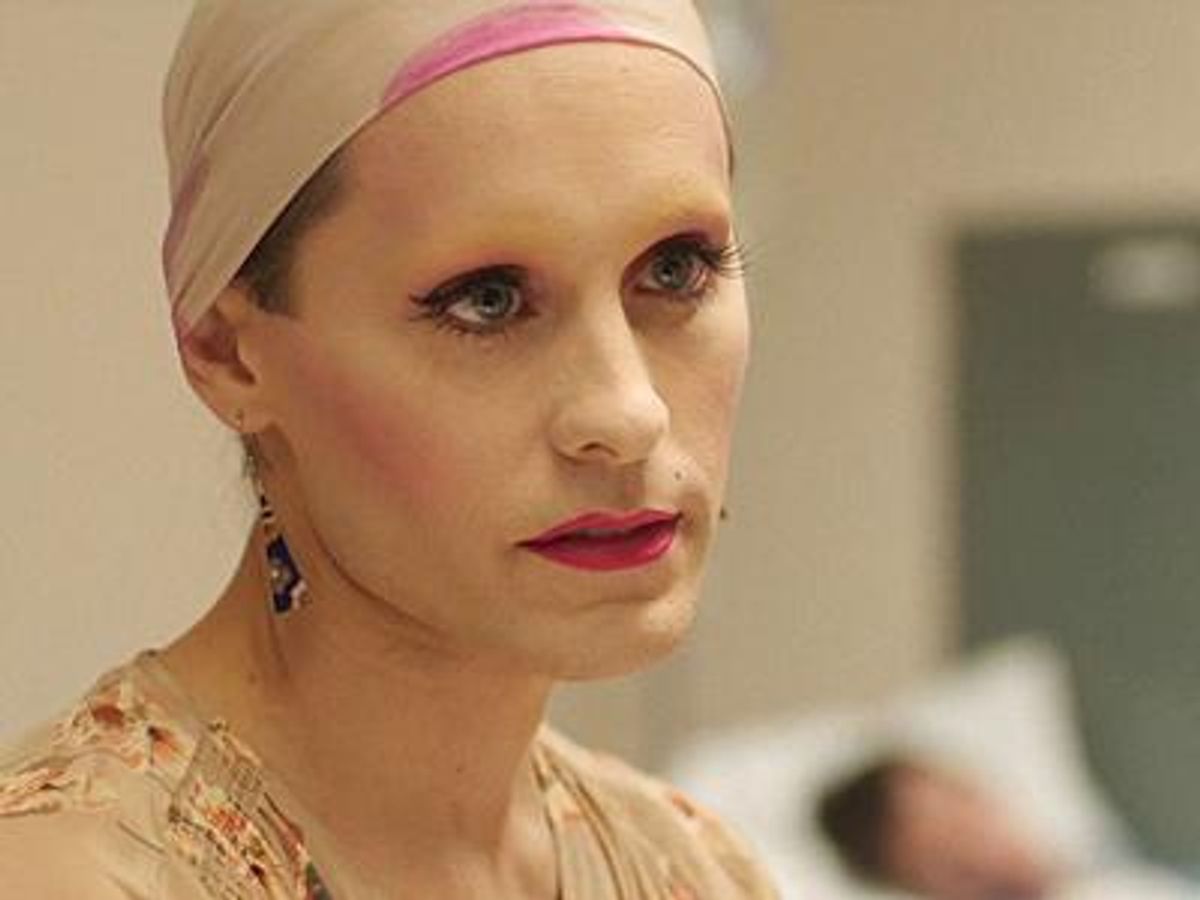

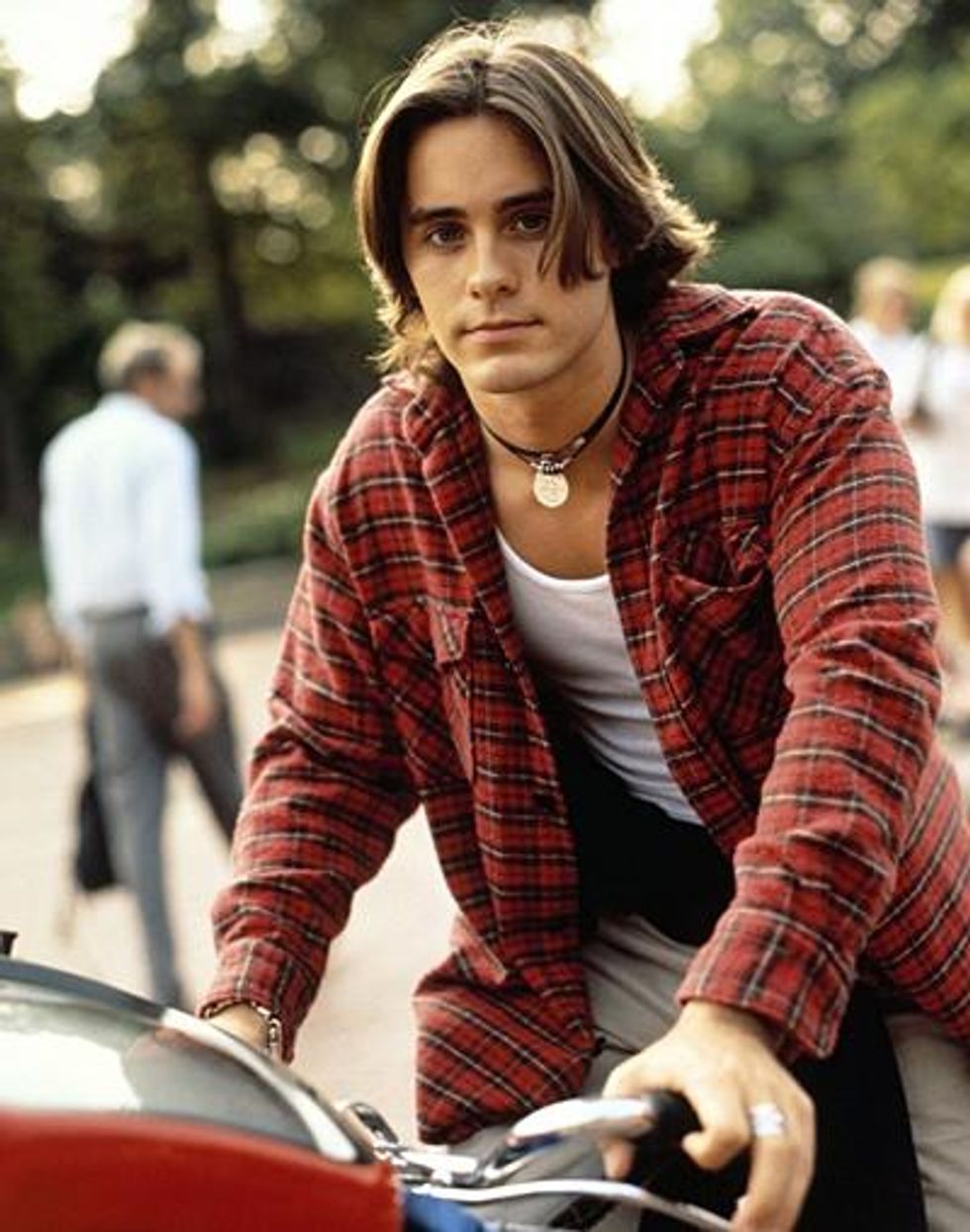
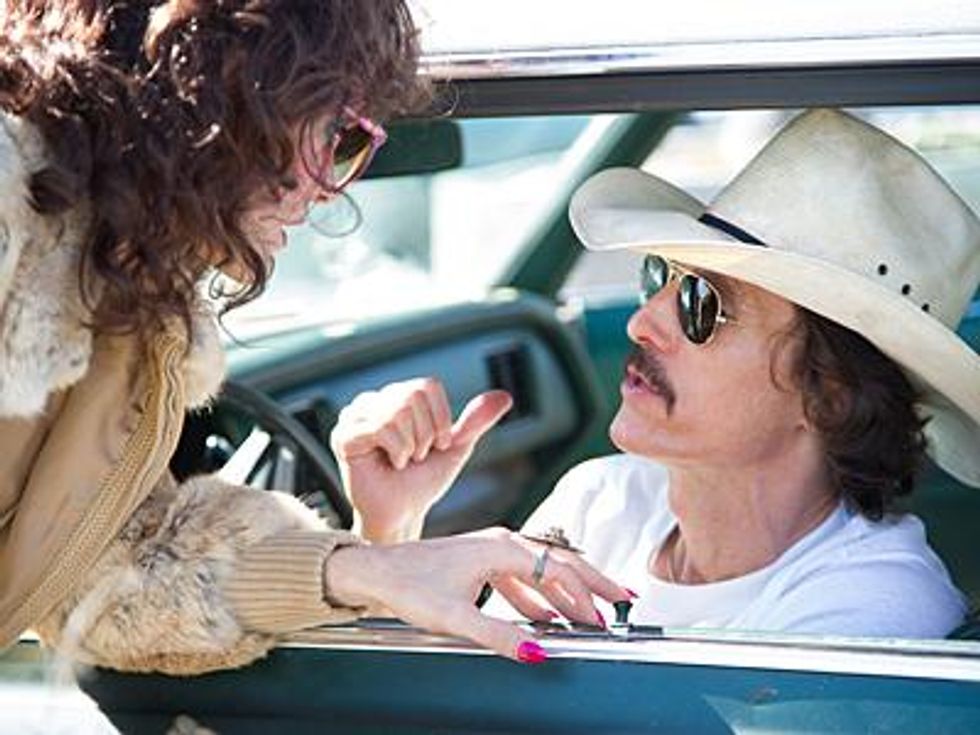 [Leto and McConaughey as Ron Woodruff in Dallas Buyers Club (right)]
[Leto and McConaughey as Ron Woodruff in Dallas Buyers Club (right)]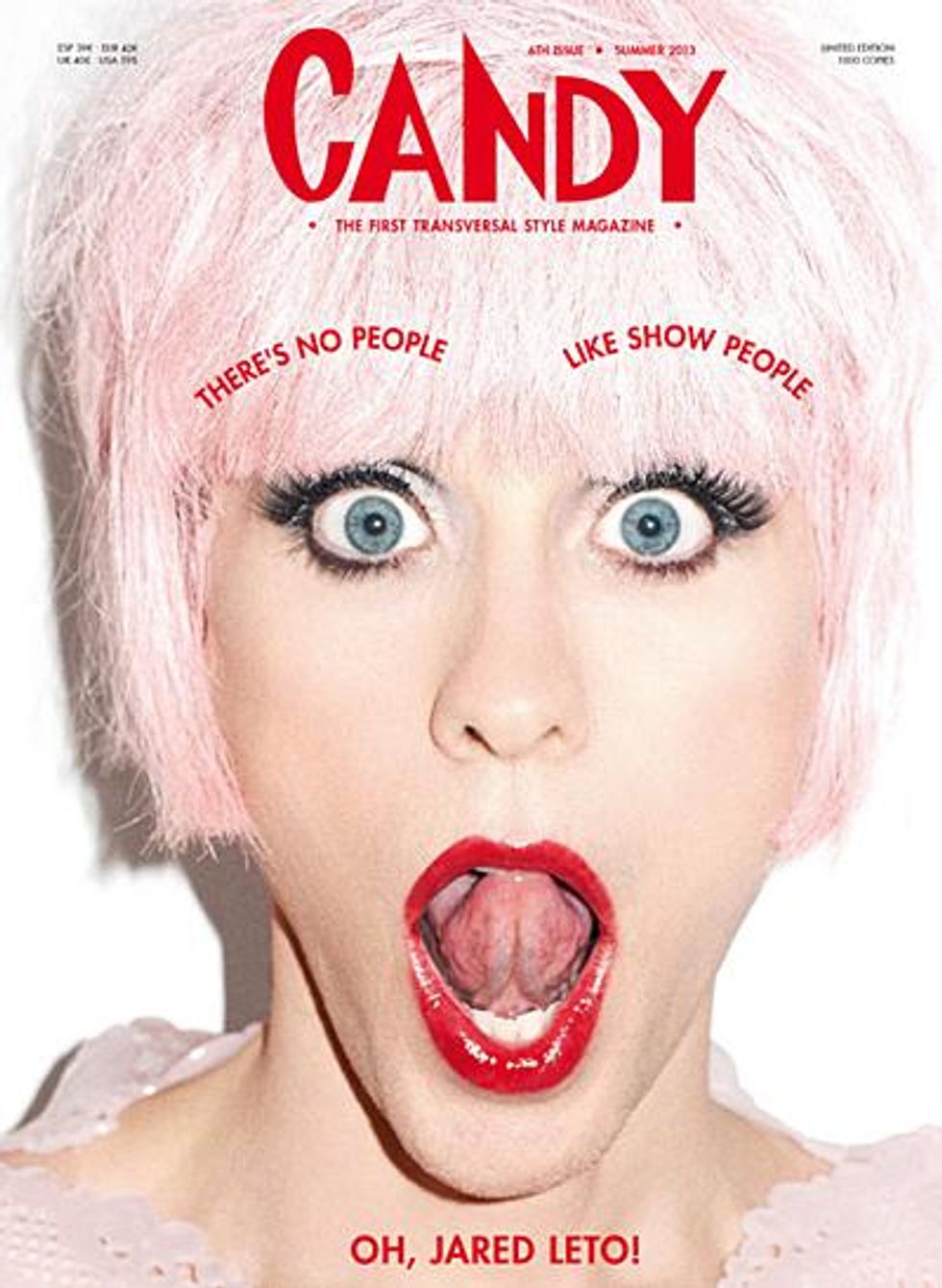 [Right: The actor previously donned drag for the cover of the trans magazine, Candy.]
[Right: The actor previously donned drag for the cover of the trans magazine, Candy.]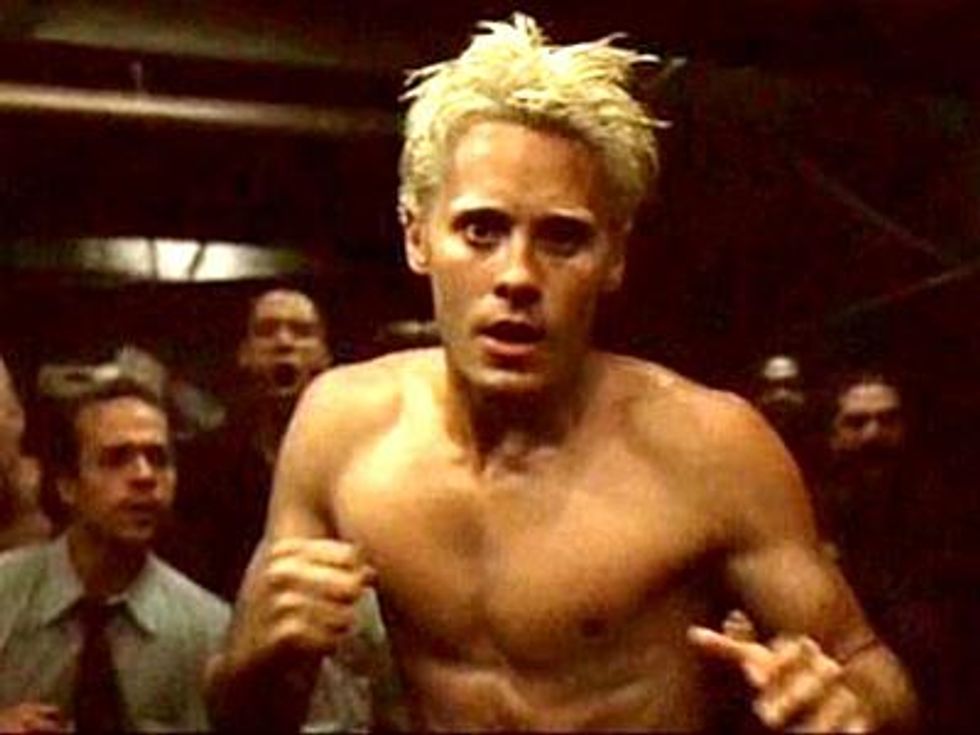 [Right: He went butch, buff, and blonde for Fight Club]
[Right: He went butch, buff, and blonde for Fight Club]
















































































Viral post saying Republicans 'have two daddies now' has MAGA hot and bothered